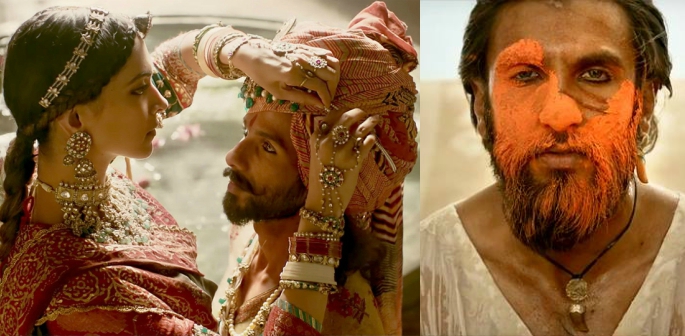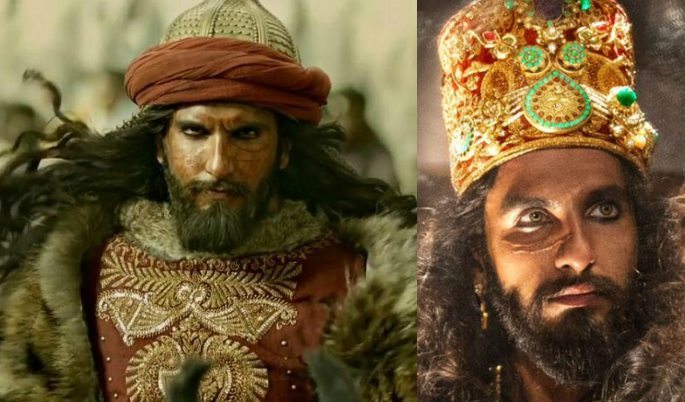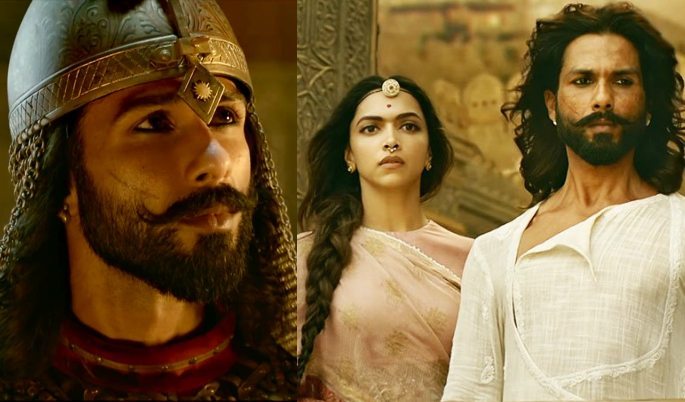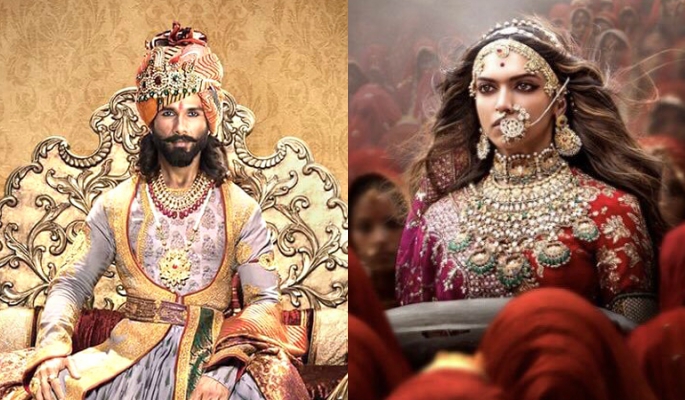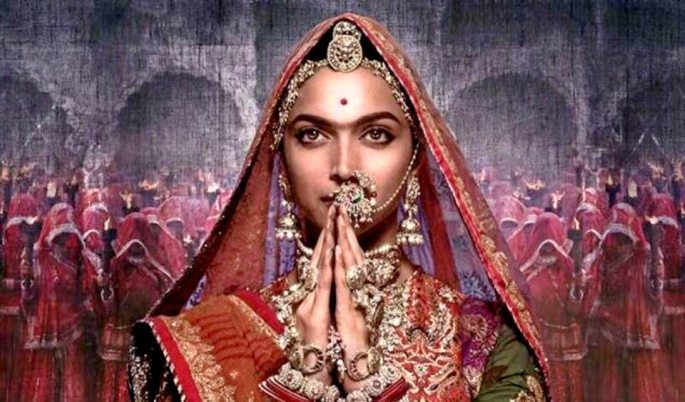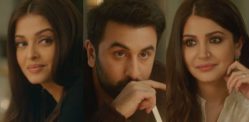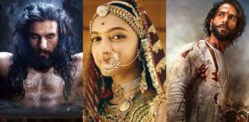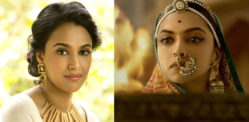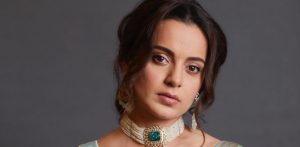The real show-stealer here, though, is Ranveer Singh.
Padmaavat, despite so many protests and delays, has finally descended on our cinema screens.
With a phenomenal cast consisting of Ranveer Singh, Deepika Padukone and Shahid Kapoor, the expectations for this film are sky-high.
Based on a tale that revolves around desire, power and honour, Sanjay Leela Bhansali’s historical epic promises to be his most ambitious and nail-biting yet.
So, considering the chaos and controversy that has gone on in the media for the past few months, how good is this period drama? DESIblitz reviews.
Story and Historical Context of Padmaavat
The original story of Padmaavat is depicted in a poem penned by Muhammad Malik Jayasi.
Similar to the original, the film presents the harmonious relationship between the Chittor King, Maharawal Ratan Singh (played by Shahid Kapoor), and the Princess of Singhal, Padmavati (played by Deepika Padukone).
Their love and amiable rapport is interrupted, however, by the arrival of Sultan of Delhi Alauddin Khilji (played by Ranveer Singh), and all hell breaks loose for the Raja and Maharani.
Historically, Khilji, the main villain of this story, invaded the Delhi throne in 1296 AD by murdering his uncle and then leader, Jalaluddin Khilji (played by Raza Murad).
Alauddin was soon informed about Queen Padmavati’s beauty by Ratan Singh’s banished musician, Raghav Chaitanya.
Driven by lust and curiosity, Khilji headed to Chittor, in order to seize the Maharani. What happened next however, has been subject to much debate.
Old texts imply that Alauddin’s request to meet Padmavati was rejected as the Rajput culture prohibited women from meeting unknown men.
With his ego hurt, Khilji declared war against Chittor. However, he could not capture the throne and tragically, Ratan Singh was killed.
Khilji stormed the Chittor kingdom again in 1303. Finally conquering it, the brutal warrior went in search of Padmavati.
However, by then, the Maharani and the other women had performed mass self-immolation through ‘Jauhar’, in order to preserve their honour.
Bhansali’s Splendid Direction
When it comes to filmmaking, no one can doubt Sanjay Leela Bhansali (SLB) and his ambitious direction.
SLB’s use of wide-shots during the battle sequences of the film are incredible to watch. Plus, when the characters are running, the camera runs with them, giving Padmaavat its visceral feel.
These shots really make the movie a magnum-opus, in a literal sense. No wonder Padmaavat is the first Indian film to be released in IMAX 3D.
Undoubtedly, it is Bhansali’s creative eye that becomes the highlight of his work.
There is everything one expects to see: the lavish sets, visually stunning costumes, and yes, plenty of colours.
Usually, in Bhansali films, we find it is often the two female protagonists who confront each other.
Padmaavat marks the first time since Hum Dil De Chuke Sanam that the lead male protagonists in an SLB film come vis-a-vis with each other.
The confrontations that we see in this movie between Ranveer and Shahid are quite iconic. After all, you don’t get to witness two handsome Bollywood hunks sharing screen-space every day!
As grand as the premise of Padmaavat is, the climax is equally enthralling, reaching a crescendo that leaves you stunned.
The ‘Jauhar’ scene is one which gives goosebumps, especially due to its dramatic build-up.
The haunting screams of the women, upbeat background music and stellar performances will leave you shocked and will remain with you for days to come.
These ultimate 15-20 minutes take the film to a whole new level. And the scene also unequivocally proves what a magnificent director Sanjay Leela Bhansali is.
Excellent Performances by the Cast of Padmaavat
Padmaavat, as expected, features some power-packed performances. Deepika Padukone, to begin with, is simply remarkable.
No one could have portrayed Padmavati better than Padukone. Deepika appears so immaculate and graceful in each scene, no matter how serious or intense it is.
After playing Mastani, Deepika’s acting goes notches higher in this spectacular venture.
Shahid Kapoor also does a great job. His voice is buland (strong), his expressions are fierce and posture is valiant as Ratan Singh. Plus, Kapoor and Padukone’s chemistry is exquisite, they look so convincing together as king and queen.
The real show-stealer here, though, is Ranveer Singh. He is terrific, to say the least. Ranveer as Alauddin Khilji is the most menacing villain in Bollywood, since perhaps Sanjay Dutt as Kancha Cheena.
Khilji’s ferocity sticks in your mind even after the credits roll. This is Ranveer’s best performance till date, period.
However, it’s not just the main cast who shine. The supporting cast also deliver extraordinary performances.
Jim Sarbh is first-rate as Malik Kafur, the eunuch consort to Khilji. His screen presence is so strong that any small act or dialogue leaves a great effect on the audience.
In fact, Aditi Rao Hydari‘s screen appearance is equally impactful and she looks gorgeous as Khilji’s wife, Mehrunissa.
With minimal dialogues in the film, Hydari’s body language and expressions convey many sentiments. She is very good!
A special mention also goes to Anupriya Goenka – who was previously seen in Tiger Zinda Hai. Goenka leaves a solid impression as Nagmati, the first wife and chief queen of Ratan Singh. Anupriya has high potential as an actress.
And finally, legendary Raza Murad also enacts his part well.
Empathy towards the Characters and Storyline
There are mutual feelings that audiences will experience for the male and female characters, respectively.
On one hand, we feel anger towards Alauddin Khilji and Maharawal Ratan Singh (though for differing reasons).
For example, the viewer despises the lust and tyranny which drives Khilji to destroy another woman’s life.
When it comes to Ratan Singh, we feel angered that his high principles and self-pride prevent him from attacking Khilji during opportune moments and annihilating this enemy.
On the other hand, the audience feels proud and empathetic towards the female characters Padmavati and Mehrunissa.
This is because both these characters are strong-willed during a time where women were mainly considered to be homemakers, rather than decision makers.
For instance, Mehrunissa tries to help the Rajputs, without caring that her life and reputation could be at risk.
Similarly, with Padmavati, she would do anything to preserve her honour and duty as a Rajput.
It is the nobility of their actions despite being doomed to sadness and death by the world of men. The fact that they continue to do what they deem as right, shows their strength. And Bhansali is able to exhibit this female power without being preachy or excessive.
Another observation is that SLB often uses symbolism to highlight the concept of his stories.
For example, in Devdas, it was the diya which depicted the strength of Paro’s love for Dev.
The film Black focuses on visual impairment and how one cannot see anything but darkness and ‘black’. That is, until it finally snows. The purity of the snow implies hope and light.
Symbolism is also faintly used in Padmaavat. This time, it is in form of a lotus, which is seen on top of the ‘T’ in the official posters.
The lotus is beautiful and delicate, yet it can float and survive amongst the muck surrounding it – it symbolises the strength and untainted grace of Maharani Padmavati.
Mesmerising Soundtrack and Background Score
After previous exceptional musical soundtracks like Ram Leela and Bajirao Mastani, SLB has once again scored a chartbuster with Padmaavat.
The album, overall, incorporates a rich blend of Rajasthani and Middle Eastern sounds.
‘Ghoomar’ denotes the traditional dance from Rajasthan, and includes terrific vocals by Shreya Ghoshal and Swaroop Khan.
There is a strong folk feel to the song, which is accompanied by a delightful spectacle that sees Padukone grooving authentically.
In contrast, ‘Binte Dil’ and ‘Khalibali’ are two songs which emit Middle Eastern beats and rhythms.
‘Binte Dil’, in particular, has a real majestic feel to it. The main lyrics describe how a girl’s heart is in Egypt/Misr. In short, these lines summarise Khilji’s attraction towards Padmavati.
Arijit Singh’s endeavour to sing in an Arabic way is excellent. This can be added to his best works!
‘Khalibali’ slightly differs in style to ‘Binte Dil’, although the attraction towards the Maharani is still described. The tone in ‘Khalibali’ is celebratory, almost like the ‘Malhari’ of Padmaavat.
Collectively, the songs are spellbinding and Sanchit Balhara’s background score is both enchanting and gripping.
One simply cannot fault the music of this film!
Final Word?
Despite many positive points, there are a few flaws in the film.
Firstly, the duration of 2 hours and 40 minutes seems lengthy, especially because the second-half slightly drags out. With a few edits, the movie can be shortened, at least down to 2 hours and 30 minutes!
Secondly, the film seems to focus predominantly on Khilji. It would have been interesting to see more of Padmavati’s background. For instance, how she grew up being more knowledgeable and how she trained in archery.
This would have added greater depth to her role and could help us to see a clearer graph of character progression.
Furthermore, queen Nagmati is demonstrated in a quite a non-amicable manner. We wish her character was made stronger and featured more prominently in the film.
However, despite these few changes, Padmaavat is certainly another masterpiece by Sanjay Leela Bhansali.
The film is a work of art which must be appreciated and celebrated. And it could even be acknowledged as his best work till date.
The viewer does not solely watch Padmaavat, they live it. We strongly recommend you go and see this mesmerising piece of cinema!



















































